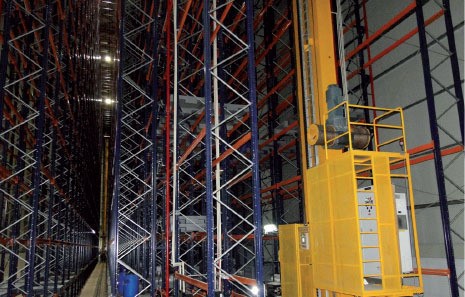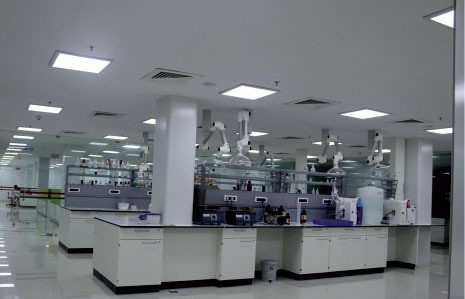Medreich Limited’s Cutting-Edge ASRS – First in India - Part 2

This article was published in the November/December 2016 edition of Pharmaceutical Engineering® magazine. Missed Part 1? Catch up now – Medreich Limited’s Cutting-Edge Automation System Is a First in India – Part One
Automated Storage and Retrieval System (ASRS)
With these challenges in mind, the Medreich team decided to connect all locations in the new facility’s manufacturing and warehouse areas via a fully integrated automated storage and retrieval system (ASRS). "ASRS are available in several manufacturing facilities, but in this plant we connected the system into our manufacturing operations with a network of conveyors and automated lifts," says Kedareshwar.

interior view of warehouse ASRS area
"When a person in the manufacturing area makes a request on a computer, the material will be picked up from the warehouse and delivered to that particular location and that particular floor. That gives a great relief to the manufacturing personnel from the supportive activities." This is especially helpful during evening or night shifts, when fewer staff may be available and moving materials across the plant becomes more challenging.
More Efficient Labeling
To ensure optimal functioning and reduce the amount of time spent on support activities, the Medreich team also devised a more efficient and effective labeling scheme for all materials moving through the facility.

Quality control lab
In most pharmaceutical manufacturing plants, colored labels are applied to containers depending on where the material is to be moved (e.g., quarantine, approved, rejected). "These operations can be quite complex when you’re talking about nine billion capsules and tablets, which demands 400 pallets of transfer each day," says Kedareshwar. "They are also prone to errors when you have to apply labels, remove labels, and change labels. If any mistake happens, it is disastrous. So we removed all of these labels and use only one universal label. Once the material moves into the warehouse, the label is not changed; only a barcode is added and tracked. The status of the material is then always known on the system." The decision to integrate the ASRS in both the warehouse and manufacturing areas was not only a logistical challenge, but a software challenge as well. Distinct software packages—SAP, software for the weighing machines, in-boarding documents from the vendor—had to be combined and integrated so that each program could communicate with the others and provide users with complete product information at all times. Noting that Medreich left room for an additional facility on the available land, Kedareshwar confirms that he could certainly envision using ASRS in the new facility.
Regulatory Approval
A major challenge for Kedareshwar and his team was receiving approval from the Indian regulatory authorities, who had to be convinced that straying from the traditional labeling and segregated storage methods would provide superior results. "We are removing the present labeling system and are going to a single white-colored label with the barcode," says Kedareshwar. "It was a challenge for us to get it accepted by the Indian regulatory authorities, but after explaining the entire system and having seen all the verification systems, they were quite convinced. They have gone through the system and they approved the facility. This was a major challenge for us, because we are going away from the conventional system in India, where there are very few automated storage systems." The Unit VII project was finished on budget in the stipulated time of 24 months. The facility and product validations were completed successfully, with necessary approvals from the state government of Karnataka, Drugs Control Department. Initial validation batches showed that the process was efficient and effective, and that the facility’s intended objectives had been met.
Perspective
Looking back on the project, Kedareshwar is proud of how employees have reacted, and pleased with the efficiency of the facility. "Employee morale is quite high because they have the opportunity to work in the most modern plant with a very high level of automation," he says. "If we were to do things in the regular way, we would have to employ at least 80 to 100 people in the warehouse operations, but with this type of operation our staff will be reduced to a maximum of 20 people. "The major thing is that we avoided errors due to manual handling, which is always a major concern in the pharmaceutical industry. That is totally eliminated because the entire material transfer is tracked by the barcode label. And that is a major point for us: At nine billion capsules and tablets, to operate error free is a very challenging job."
Pharmaceutical Engineering® Magazine: The magazine covers topics important to the global pharmaceutical industry across all sectors, including traditional pharmaceuticals, biotechnology, innovator, and generics. Pharmaceutical Engineering magazine presents valuable information on the latest scientific and technical developments, regulatory initiatives, and innovative solutions to real-life problems and challenges through practical application articles and case studies. Stay connected with the pharmaceutical industry by becoming a member of ISPE and receive Pharmaceutical Engineering magazine delivered to your inbox and by mail.



